Asuntos Tradicionalistas
 |
 |
 |
 |
 |
 |
 |
Misa Dialogada - CL
Tyrrell luchó contra la ‘tiranía’ del escolasticismo
Era característico de todos los modernistas — siendo la libertad de pensamiento y de autoexpresión de importancia suprema en su visión del mundo — rebelarse contra las restricciones de cualquier “autoridad externa” o poder superior que sofocara el espíritu de independencia que promovían como el valor más elevado. La autoridad espiritual de Roma en materia de Fe y Moral era su objetivo principal, como lo había sido durante la “Reforma” protestante, y aún lo es hoy en día.
Tyrrell resentía profundamente a la Iglesia institucional, especialmente sus estructuras de autoridad que ejercían poder jurídico contra la expresión de ideas heréticas. Nunca le perdonó por haber censurado sus obras y excomulgado, y rutinariamente la difamaba como una prisión para el alma, un infierno autoritario y represivo, como por ejemplo cuando afirmó:
“La Iglesia se sienta sobre mi alma como una pesadilla, y la opresión es enloquecedora.”1
 A menudo se quejaba de la “asfixia” de la libertad intelectual bajo Pío X, quien mandó que el estudio de la Filosofía Escolástica formara parte de toda la formación en los seminarios. Tyrrell acusó que “las escuelas teológicas han llegado a tiranizar a la Iglesia en estos días perversos.”2 Describió específicamente al escolasticismo como una “tiranía”;3 de hecho, “una de las peores tiranías intelectuales que el mundo haya conocido.”4 Su visión de la Iglesia era transformarla en una religión libre de restricciones que hiciera del creyente “un pájaro libre en vuelo” y “no aplastado y destrozado en las garras del halcón.”5 El espíritu humano, creía, nunca podría ser libre mientras estuviera prisionero de la necesidad de obedecer a superiores religiosos y de respetar el sistema escolástico de razonamiento intelectual.
A menudo se quejaba de la “asfixia” de la libertad intelectual bajo Pío X, quien mandó que el estudio de la Filosofía Escolástica formara parte de toda la formación en los seminarios. Tyrrell acusó que “las escuelas teológicas han llegado a tiranizar a la Iglesia en estos días perversos.”2 Describió específicamente al escolasticismo como una “tiranía”;3 de hecho, “una de las peores tiranías intelectuales que el mundo haya conocido.”4 Su visión de la Iglesia era transformarla en una religión libre de restricciones que hiciera del creyente “un pájaro libre en vuelo” y “no aplastado y destrozado en las garras del halcón.”5 El espíritu humano, creía, nunca podría ser libre mientras estuviera prisionero de la necesidad de obedecer a superiores religiosos y de respetar el sistema escolástico de razonamiento intelectual.
Como resultado de esta clase de difamación por parte de Tyrrell y los primeros modernistas, el Sistema Escolástico fue asociado por los progresistas con injusticia y opresión. La mera palabra “Escolástica” provoca hoy carcajadas y comentarios groseros entre muchos clérigos. Evoca imágenes mentales de sofismas absurdos, disputas inútiles sobre temas irrelevantes para la vida real, llevadas a cabo por personas que afirmaban tener el monopolio del conocimiento y una respuesta para todo.
Francisco trata al escolasticismo como una anomalía absurda
No hace falta decir que Francisco, con su peculiar talento para sembrar confusión y división a escala global, mostró poco respeto por la gran tradición escolástica de la Iglesia. Puede que, por razones de apariencia, haya elogiado algunos aspectos en alguna ocasión, pero en realidad, aprovechó cada oportunidad para criticarla directa o indirectamente, siguiendo el ejemplo de Tyrrell. Este último, sin embargo, al menos tenía el mérito de ser menos hipócrita.
Después de presentar un discurso en la 36a Congregación General de la Compañía de Jesús el 24 de octubre de 2016, Francisco llevó a cabo una sesión de preguntas y respuestas con sus compañeros jesuitas. En ella, hizo una condena general del sistema escolástico utilizado en los seminarios desde el post-modernismo hasta el Vaticano II:
“Yo, y los de mi generación — tal vez no los más jóvenes aquí, pero mi generación y algunas posteriores también — fuimos educados en una escolástica decadente. Estudiamos teología y filosofía con manuales. Era una escolástica decadente. Por ejemplo, para explicar el ‘continuum metafísico’ — me da risa cada vez que lo recuerdo — nos enseñaban la teoría de los ‘puncta inflata.’ Cuando la gran escolástica comenzó a perder fuerza, surgió esa escolástica decadente con la que al menos mi generación y otras estudiamos.”6
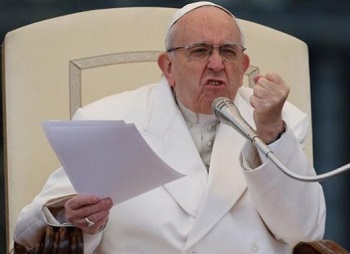 Consideremos por un momento el probable impacto que expresiones tan despectivas — que durante décadas formaron parte del discurso progresista — habrían tenido en la moral de los jóvenes seminaristas en tiempos del Vaticano II. Decirles que lo que habían aprendido provenía de viejos manuales polvorientos y obsoletos que los harían parecer ridículos ante el mundo moderno era una forma segura de convencerlos para abandonar la teología antigua por la nueva. Después de todo, el Vaticano II preparó el escenario para la “Nueva Evangelización” (que no es más que una versión actualizada del antiguo modernismo), presentada como el único camino que la Iglesia debería seguir hoy en día.
Consideremos por un momento el probable impacto que expresiones tan despectivas — que durante décadas formaron parte del discurso progresista — habrían tenido en la moral de los jóvenes seminaristas en tiempos del Vaticano II. Decirles que lo que habían aprendido provenía de viejos manuales polvorientos y obsoletos que los harían parecer ridículos ante el mundo moderno era una forma segura de convencerlos para abandonar la teología antigua por la nueva. Después de todo, el Vaticano II preparó el escenario para la “Nueva Evangelización” (que no es más que una versión actualizada del antiguo modernismo), presentada como el único camino que la Iglesia debería seguir hoy en día.
La descalificación del Sistema Escolástico de formación seminarista por parte del Papa fue una sutil herramienta de propaganda que opera generando miedo a ser marginado por el mundo moderno y a ser víctima de un control tiránico por parte de una Iglesia desfasada. Este también fue el mensaje promovido por el P. Tyrrell.
La condena del escolasticismo por parte de los teólogos progresistas como anticuado fue respondida con la siguiente reprensión del Papa Pío X:
“Para la Filosofía y Teología Escolástica no tienen más que burla y desprecio. Ya sea por ignorancia o por miedo, o ambos, cierto es que la pasión por la novedad siempre va unida en ellos al odio por la Escolástica, y no hay señal más segura de que un hombre está en camino al modernismo que cuando comienza a mostrar su disgusto por este sistema. Los modernistas y sus admiradores deberían recordar la proposición condenada por Pío IX: El método y los principios que sirvieron a los doctores de la Escolástica al tratar la teología ya no corresponden a las exigencias de nuestro tiempo ni al progreso de la ciencia (Syllabus, Prop. 13). Ejercen toda su astucia en disminuir la fuerza y falsificar el carácter de la tradición, para despojarla de todo su peso.” (Pascendi § 42)
Además, las generaciones de formación en los seminarios a las que se refiere Francisco estaban lejos de ser decadentes. En esa época, desde mediados del siglo XIX hasta finales de los años 50, la larga tradición escolástica, especialmente la metafísica tomista, estaba en el apogeo de su prestigio. Fue alentada por una sucesión de elogios papales:
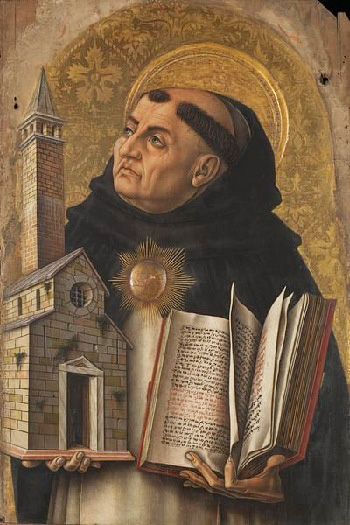
“La Iglesia no tiene una filosofía propia, ni canoniza ninguna filosofía en particular por encima de otras.” (Fides et ratio, 1998, § 49)
En un vano intento de respaldar su afirmación, se refirió a un pasaje de Humani generis9, pero sin citarlo. Sin embargo, no hay nada en esa referencia que apoye su opinión. Al contrario, en la misma Encíclica, Pío XII nombra repetidamente la filosofía de Santo Tomás de Aquino como “nuestra”: (“nostram philosophiam”; “philosophiam nostris traditam scholis”, etc.)
En cuanto a la segunda afirmación de Juan Pablo II, todas las pruebas indican que la Iglesia sí ha canonizado la Filosofía Tomista, no solo al mandatar su uso en el Código de Derecho Canónico (1917), sino también mediante el juicio unánime de sucesivos Papas desde el Concilio de Trento en adelante. Solo desde el Vaticano II la Iglesia ha dejado de contar la Filosofía Tomista como una de sus posesiones esencialmente católicas, y ha comenzado a tratarla como una entre muchas filosofías que compiten por hegemonía en los seminarios.
Continuará

Tyrrell resentía profundamente a la Iglesia institucional, especialmente sus estructuras de autoridad que ejercían poder jurídico contra la expresión de ideas heréticas. Nunca le perdonó por haber censurado sus obras y excomulgado, y rutinariamente la difamaba como una prisión para el alma, un infierno autoritario y represivo, como por ejemplo cuando afirmó:
“La Iglesia se sienta sobre mi alma como una pesadilla, y la opresión es enloquecedora.”1

El modernista P. Tyrrell murió excomulgado y desanimado, negándose a retractarse de su herejía
Como resultado de esta clase de difamación por parte de Tyrrell y los primeros modernistas, el Sistema Escolástico fue asociado por los progresistas con injusticia y opresión. La mera palabra “Escolástica” provoca hoy carcajadas y comentarios groseros entre muchos clérigos. Evoca imágenes mentales de sofismas absurdos, disputas inútiles sobre temas irrelevantes para la vida real, llevadas a cabo por personas que afirmaban tener el monopolio del conocimiento y una respuesta para todo.
Francisco trata al escolasticismo como una anomalía absurda
No hace falta decir que Francisco, con su peculiar talento para sembrar confusión y división a escala global, mostró poco respeto por la gran tradición escolástica de la Iglesia. Puede que, por razones de apariencia, haya elogiado algunos aspectos en alguna ocasión, pero en realidad, aprovechó cada oportunidad para criticarla directa o indirectamente, siguiendo el ejemplo de Tyrrell. Este último, sin embargo, al menos tenía el mérito de ser menos hipócrita.
Después de presentar un discurso en la 36a Congregación General de la Compañía de Jesús el 24 de octubre de 2016, Francisco llevó a cabo una sesión de preguntas y respuestas con sus compañeros jesuitas. En ella, hizo una condena general del sistema escolástico utilizado en los seminarios desde el post-modernismo hasta el Vaticano II:
“Yo, y los de mi generación — tal vez no los más jóvenes aquí, pero mi generación y algunas posteriores también — fuimos educados en una escolástica decadente. Estudiamos teología y filosofía con manuales. Era una escolástica decadente. Por ejemplo, para explicar el ‘continuum metafísico’ — me da risa cada vez que lo recuerdo — nos enseñaban la teoría de los ‘puncta inflata.’ Cuando la gran escolástica comenzó a perder fuerza, surgió esa escolástica decadente con la que al menos mi generación y otras estudiamos.”6

Francisco se unió a las filas del modernismo al arremeter contra la escolástica ‘decadente’
La descalificación del Sistema Escolástico de formación seminarista por parte del Papa fue una sutil herramienta de propaganda que opera generando miedo a ser marginado por el mundo moderno y a ser víctima de un control tiránico por parte de una Iglesia desfasada. Este también fue el mensaje promovido por el P. Tyrrell.
La condena del escolasticismo por parte de los teólogos progresistas como anticuado fue respondida con la siguiente reprensión del Papa Pío X:
“Para la Filosofía y Teología Escolástica no tienen más que burla y desprecio. Ya sea por ignorancia o por miedo, o ambos, cierto es que la pasión por la novedad siempre va unida en ellos al odio por la Escolástica, y no hay señal más segura de que un hombre está en camino al modernismo que cuando comienza a mostrar su disgusto por este sistema. Los modernistas y sus admiradores deberían recordar la proposición condenada por Pío IX: El método y los principios que sirvieron a los doctores de la Escolástica al tratar la teología ya no corresponden a las exigencias de nuestro tiempo ni al progreso de la ciencia (Syllabus, Prop. 13). Ejercen toda su astucia en disminuir la fuerza y falsificar el carácter de la tradición, para despojarla de todo su peso.” (Pascendi § 42)
Además, las generaciones de formación en los seminarios a las que se refiere Francisco estaban lejos de ser decadentes. En esa época, desde mediados del siglo XIX hasta finales de los años 50, la larga tradición escolástica, especialmente la metafísica tomista, estaba en el apogeo de su prestigio. Fue alentada por una sucesión de elogios papales:

La escolástica de Santo Tomás ha sido formalmente adoptada por la Iglesia como su ‘propia’ filosofía
- Pío IX elogió la Escolástica en Tuas libenter (1863) como “un poderoso baluarte de la Fe y un arma temible contra sus enemigos”;7
- León XIII publicó Aeterni Patris (1879) en defensa y estímulo de la Filosofía Escolástica de Santo Tomás de Aquino;
- Pío X hizo lo mismo en Pascendi (1907), Sacrorum Antistitum (1910) y en Angelici Doctoris (1914);
- Benedicto XV consagró la tradición en el Código de Derecho Canónico (1917);8
- Pío XI afirmó en Studiorum Ducem (1923) que la Escolástica de Santo Tomás de Aquino, que aún se enseñaba en su época, era de la más alta autoridad, “pues la Iglesia ha adoptado su filosofía como propia”;
- Más cerca del Vaticano II, el Sistema Escolástico aún era muy estimado por su valor perenne como marco intelectual básico de la Iglesia. En 1950, Pío XII declaró que “nunca debemos desecharlo, ni contaminarlo con principios falsos, ni considerarlo como una gran pero obsoleta reliquia...” (Humani generis § 30)
“La Iglesia no tiene una filosofía propia, ni canoniza ninguna filosofía en particular por encima de otras.” (Fides et ratio, 1998, § 49)
En un vano intento de respaldar su afirmación, se refirió a un pasaje de Humani generis9, pero sin citarlo. Sin embargo, no hay nada en esa referencia que apoye su opinión. Al contrario, en la misma Encíclica, Pío XII nombra repetidamente la filosofía de Santo Tomás de Aquino como “nuestra”: (“nostram philosophiam”; “philosophiam nostris traditam scholis”, etc.)
En cuanto a la segunda afirmación de Juan Pablo II, todas las pruebas indican que la Iglesia sí ha canonizado la Filosofía Tomista, no solo al mandatar su uso en el Código de Derecho Canónico (1917), sino también mediante el juicio unánime de sucesivos Papas desde el Concilio de Trento en adelante. Solo desde el Vaticano II la Iglesia ha dejado de contar la Filosofía Tomista como una de sus posesiones esencialmente católicas, y ha comenzado a tratarla como una entre muchas filosofías que compiten por hegemonía en los seminarios.
Continuará
- G. Tyrrell, ‘Carta a V.’ [Barón Friedrich von Hügel], 18 de mayo de 1903, en Maude Petre (ed.), Cartas de George Tyrrell, Londres: T. Fisher Unwin Ltd., 1920, p. 109.
- G. Tyrrell, La Iglesia y el Futuro, p. 107.
- G. Tyrrell, ‘Carta a V.’, 5 de noviembre de 1904, en Maude Petrie (ed.), Cartas de George Tyrrell, p. 108.
- G. Tyrrell, La Iglesia y el Futuro, p. 33.
- G. Tyrrell, El cristianismo en la encrucijada, Londres; Nueva York, Longmans, Green and Co., 1910, p. 219.
- Francisco, ‘Tener coraje y audacia profética’, Diálogo con los jesuitas reunidos en la 36a Congregación General, Documentos de la Congregación General de la Compañía de Jesús, 6 de enero de 2017, p. 46.
- “Fortissimum fidei propugnaculum et formidanda contra suos inimicos arma,” Carta al arzobispo Gregor von Scherr de Múnich y Freising, 21 de diciembre de 1863.
- “El estudio de la filosofía y la teología, y la enseñanza de estas ciencias a sus estudiantes, debe realizarse con precisión por los profesores según los argumentos, doctrinas y principios de Santo Tomás, que deben mantener inviolablemente.” (Código de Derecho Canónico de 1917, Canon 1366 § 2)
- AAS 42, 1950, p. 566.
Publicado el 9 de junio de 2025

______________________
______________________
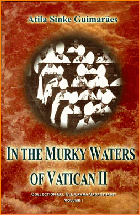 Volume I |
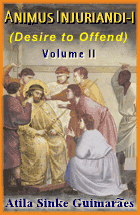 Volume II |
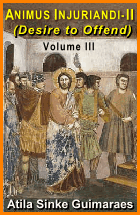 Volume III |
 Volume IV |
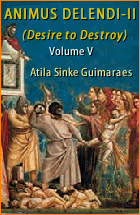 Volume V |
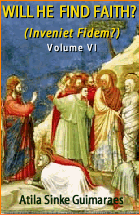 Volume VI |
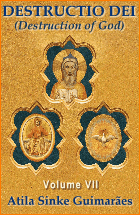 Volume VII |
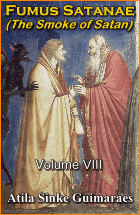 Volume VIII |
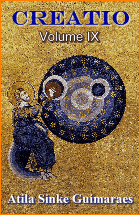 Volume IX |
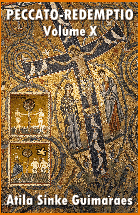 Volume X |
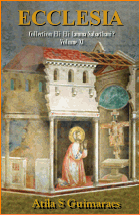 Volume XI |
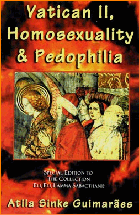 Special Edition |






